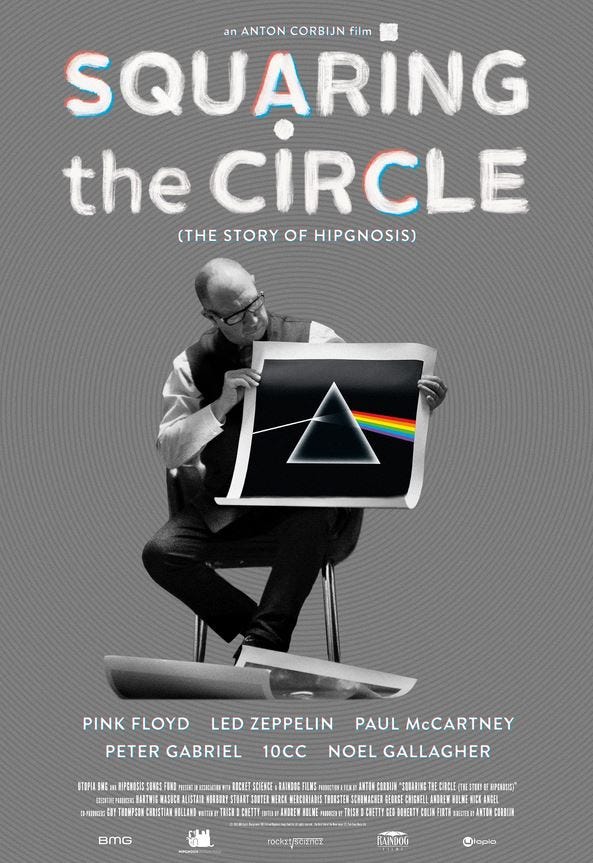C&C 24: More Spies, Deep Water, and Album Covers
Another roundup of recommendations
Slow Horses returns to Apple TV+ this week, and in anticipation I inhaled the latest novel by Mick Herron. The Secret Hours (2023) is billed as a “standalone spy thriller,” but in truth it’s more of a Slough House-adjacent entry. Reading Herron’s previous books about the shabby rubber room for MI5 agents who have cocked up would help enormously in appreciating this outing. If you have, then The Secret Hours stands among Herron’s best and might even be his masterpiece.
We begin in prime Herron country: petty behind-the-scenes backbiting as a top-secret tribunal is established. It’s peopled by disinterested noteworthy names—including a send-up of Herron himself, “an espionage novelist whose recent decalogy about a mole hunt in the upper echelons of what she referred to as the Fairground had her pegged by some as the heir to le Carré—one of an admittedly long list of legatees”—and spearheaded by civil servants who regard the assignment as a career dead-end. Then a file is mysteriously slipped into the committee’s hands, detailing a long-buried caper from Berlin in the early days of German reunification with ramifications for present-day UK politics and several Slough House regulars, here referred to obliquely. It’s every bit as funny as Herron’s other work, with choice metaphors and juicy descriptive passages to spare. Beneath the dazzling language lies a righteous anger, exemplified by the many ways in which Herron brings the title home.
You never know when treachery might strike, or from what quarter. This is true whatever the time, but especially true after dark, since how we act in the light of day is largely for other people’s benefit, but what we do in the secret hours reveals who we really are.
Herron says “I empathize more with failures than I do with successes” in this profile by Sarah Lyall for the New York Times.
What I’m Watching
Nyad (2023, Netflix). Herron isn’t alone in empathizing more with failures than with successes. Consider this sports movie about endurance swimming, in which the most compelling parts take place on dry land. Diana Nyad is in her sixties when she returns to the gauntlet that defeated her at age 28: to become the first person to swim from Cuba to Florida sans shark cage. It’s no spoiler to reveal that it will require multiple attempts, with Nyad older each time she braves the water. Annette Bening’s title turn is an impressively physical one that also brims with psychological nuance. Her eyes blaze with a messianic glint as Nyad constructs her own mythology, not only to steel herself for the challenge(s) but to convince others to join her in almost cult-like fashion on her quest. Jodie Foster co-stars as Nyad’s longtime friend and coach Bonnie Stoll, her loosest and funniest performance driving the film as it celebrates the support structure that surrounds every achiever, including one who can occasionally be a vainglorious pain in the ass. Bening and Foster’s double act is a treat. The direction by Elizabeth Chai Vasarhelyi and Jimmy Chin (of the Academy Award-winning documentary Free Solo) captures the athletic difficulties but also more prosaic ones. It’s a toss-up as to which is tougher, battling the Gulf Stream or addressing a half-empty auditorium at the Southwestern Dentists Conference about your career.
Squaring the Circle: The Story of Hipgnosis (2023). Anton Corbijn’s documentary about the design studio responsible for some of the most iconic album covers of the 1960s and 70s is a reminder of the power of the right graphics. The images created by Storm Thorgerson and Aubrey “Po” Powell contributed mightily to the impact of the records that they graced. Corbijn shoots all the interviews in black and white, allowing the duo’s handiwork for bands like Pink Floyd and Led Zeppelin to burst off the screen. Many of the musicians they worked with appear to sing their praises; Paul McCartney is his impish self while Noel Gallagher, a bit of a wanker as usual, laments how far contemporary standards have fallen and that Oasis didn’t get a Hipgnosis cover of their own. I had to agree with him after visiting NetGalley and seeing page after page of generic book covers destined to go largely unseen in the Kindle era. (Renee Patrick is lucky in that respect. We’re pleased with our covers, especially the first two designed by Gerad Taylor, which are knockouts.) The film is a trip back to a time when art felt handmade, music wasn’t a commodity, and artists rather than corporations seemed to call the shots.
What (Else) I’m Reading
John Woo is back in Hollywood with the dialogue-free yuletide revenge drama Silent Night. Simon Abrams interviews him at length for the New Yorker.
Edgar Award-winner Jordan Harper looks back at the murder case that rocked his adolescence and shaped him into the crime writer he would become in Southwest Review.
At The Threepenny Review, Sarah Deming recounts her record in street fights: “We remember our losses better than our wins.”
First-rate New York Times journalism: Sopan Deb investigates how Cookie Monster’s cookies are made.




You give me so many books to add to my "To Read" list - I better live to 95 so I can finish these all!